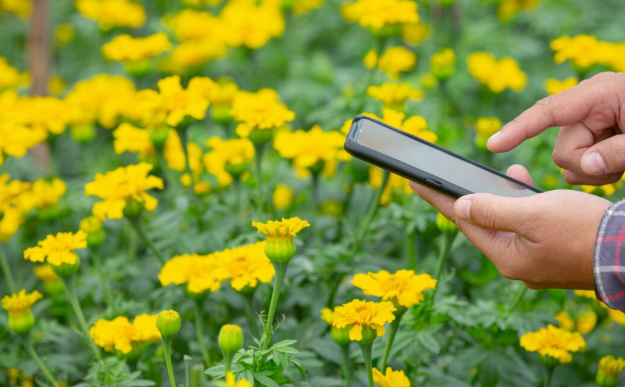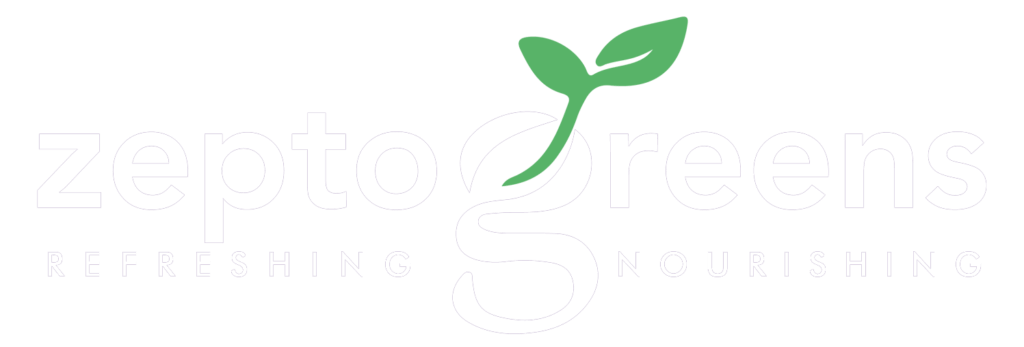For millennia, agriculture has been a dance between human toil and the whimsy of nature. Sun, rain, and hidden pests could make or break a harvest, leaving farmers at the mercy of forces beyond their control. But enter the Internet of Things (IoT) in Smart Farming, a revolution quietly rewriting the narrative. No longer are fields passive canvases for uncertainty; thanks to this interconnected web of sensors and devices, they’ve become vibrant stages for data-driven precision, transforming the way we grow food.

How the Internet of Things (IoT) in Smart Farming
Sensing the Whisper of the Land
The first spark of this revolution ignites with a network of tireless sentries – sensors scattered across the fields. They whisper tales of soil moisture content, whisper of sunlight intensity, and whisper of the telltale signs of approaching pests. These murmurs, once collected by gateways, are relayed to the cloud’s expansive memory, woven into a real-time tapestry of data that empowers farmers to make informed decisions with unprecedented accuracy.
The Orchestra of Data: The Internet of Things (IoT) Conducts the Symphony
These sensors don’t operate in isolation, but dance within the invisible symphony of the IoT. Data flows seamlessly from them to gateways, then to the cloud, and finally transforms into actionable insights accessible on any device, anywhere. This continuous communication, orchestrated by the IoT in Smart Farming, grants farmers the ability to monitor their fields from miles away, ensuring their precious crops are never truly out of reach.
Precision Agriculture: From Blanket to Brushstroke
With the symphony of data playing in their ears, farmers can abandon the one-size-fits-all approach of the past. Precision Agriculture, wielding data as a surgeon’s scalpel, tailors inputs like water, fertilizer, and pesticides to specific areas within the field. Imagine automated systems delivering customized nutrients to individual plants, maximizing their growth while minimizing waste – a testament to the efficiency born from precision.
Automation Takes the Reins
Step aside, weary workhorses! Robotic automation gallops onto the farm, revolutionizing operations. Driverless tractors meticulously follow pre-programmed routes, drones with hawk-like vision scout fields for signs of trouble, and robotic arms tirelessly tend to crops. From planting with laser-guided accuracy to weeding without disturbing the soil, automation promises not only increased efficiency but also improved worker safety and reduced labor costs.
Data Analytics: From Numbers to Knowledge
But raw data is merely fertilizer – it needs the magic of data analytics to truly bloom. Powerful algorithms sift through terabytes of information, discerning patterns in the chaos, predicting trends with uncanny accuracy, and generating actionable insights. From forecasting outbreaks of disease to optimizing irrigation schedules, data analytics is the brain behind the brawn of Internet of Things (IoT) in Smart Farming , transforming numbers into knowledge that nourishes informed decision-making.
Artificial Intelligence: Learning the Language of the Land
AI isn’t just a buzzword in Internet of Things (IoT) in Smart Farming; it’s the Rosetta Stone deciphering the complex language of the land. Machine learning algorithms, nurtured on historical data and real-time sensor readings, continuously refine their understanding of the farm’s unique ecosystem. Imagine AI systems predicting crop yields with unmatched accuracy or autonomously adjusting irrigation and fertilization based on evolving conditions – a glimpse into the future where AI partners with farmers to nurture bountiful harvests.
Cloud Computing: The Farm’s Brain in the Sky
Storing and processing this ocean of data on-farm? Impractical at best. Enter cloud computing, offering on-demand access to vast computing resources without the need for expensive hardware. From running complex data analytics to managing farm operations software, the cloud serves as the invisible backbone of Internet of Things (IoT) in Smart Farming , democratizing access to cutting-edge technology for even the smallest farms.
Bridging the Divide: Connectivity Conquers Isolation
For Internet of Things (IoT) in Smart Farming to reach its full potential, seamless connectivity is paramount. LoRaWAN, LPWAN technologies, and even satellite communication options are bridging the digital divide in rural areas, ensuring that no farm is left behind in the march towards technological advancement. Connectivity conquers isolation, empowering every farmer to join the digital revolution, regardless of their geographic location.
Blockchain: Ensuring Transparency and Trust
In an increasingly interconnected world, blockchain technology offers a secure and transparent platform for managing agricultural data. From tracking food provenance to streamlining financial transactions, blockchain has the potential to revolutionize the entire agricultural supply chain, promoting trust and ensuring fair compensation for farmers. This revolution in transparency paves the way for a more ethical and sustainable agricultural landscape.
Sustainability: Cultivating a Greener Future
Internet of Things (IoT) in Smart Farming isn’t just about profitability; it’s about cultivating a sustainable future for agriculture. By optimizing resource utilization, minimizing waste, By optimizing resource utilization, minimizing waste, and reducing environmental impact, Internet of Things (IoT) in Smart Farming paves the way for a more eco-friendly and efficient agricultural landscape. Imagine fields where robots meticulously weed without herbicides, drones monitor water usage for optimal irrigation, and sensors guide fertilization to avoid nutrient runoff. This is not just a vision; it’s the fertile ground for a future where technology and nature work hand-in-hand to nourish the planet and feed its growing population.
The Road Ahead: Challenges and Opportunities
The IoT in Smart Farming revolution, like any nascent journey, faces its share of challenges. Affordability of technology, access to infrastructure in rural areas, and data privacy concerns are potential hurdles that need to be addressed. However, these challenges are not insurmountable. With collaborative efforts from researchers, developers, policymakers, and farmers, these roadblocks can be transformed into stepping stones. Government subsidies, farmer education programs, and the increasing affordability of technology itself are powerful tools in paving the road towards widespread adoption.
Additional Resources:
- Explore the pivotal role of Internet of Things (IoT) in Smart Farming: How IoT Transforms Agricultural Practices
- Maximizing Harvests: The Importance of Soil Moisture Sensors
- Weather Stations in Agriculture: Navigating Climate Challenges
- Innovative Approaches to Soil Health Monitoring with NPK Sensors
- Improving Crop Health: The Role of Smart Agriculture Sensors
Additional Learning
Categories:
Latest Posts:
FAQs:
What is the Internet of Things (IoT) in smart farming?
The Internet of Things (IoT) in smart farming refers to a network of physical devices, sensors, and machines connected to the internet that collect and exchange data to automate and optimize agricultural practices. It transforms farming from a traditional, manual process into a data-driven, technology-integrated system.
How does IoT enable precision agriculture?
IoT enables precision agriculture by providing real-time, granular data from sensors on soil moisture, nutrient levels, and crop health. This information allows farmers to apply resources like water, fertilizer, and pesticides in specific amounts and locations, rather than using a one-size-fits-all approach. This targeted method reduces waste, minimizes environmental impact, and maximizes crop yield.
What are the main benefits of using IoT in farming?
The main benefits of using IoT in farming include increased productivity through automation, greater resource efficiency by reducing waste of water and chemicals, enhanced sustainability for a healthier environment, and improved decision-making with actionable insights from data analytics. It also helps in forecasting potential problems like pest outbreaks and optimizing harvest timing.
How does IoT improve farm sustainability?
IoT improves farm sustainability by enabling efficient resource management. Sensors monitor conditions to ensure that water and nutrients are applied only when and where they are needed, preventing runoff and soil degradation. It also facilitates the use of eco-friendly practices, such as targeted weeding by robots to reduce the need for herbicides.
What kind of data do IoT devices collect in farming?
IoT devices in farming collect a wide range of data, including:
- Environmental data: Temperature, humidity, and sunlight.
- Soil data: Moisture, pH, and nutrient levels.
- Crop data: Plant health, growth rates, and signs of disease or pest infestation.
- Machinery data: GPS location and operational status of automated equipment.
Can IoT help with pest and disease management?
Yes, IoT is highly effective for pest and disease management. Sensors and drones can detect early signs of infestations or crop diseases, allowing farmers to take proactive, targeted measures. This approach minimizes the use of harmful pesticides, protecting both the crops and the surrounding ecosystem.
How do automation and AI fit into IoT-based farming?
Automation and Artificial Intelligence (AI) are key components of IoT in smart farming. Automated machinery like driverless tractors and robotic arms perform tasks with precision based on data from IoT sensors. AI analyzes this data, learns from it, and can even make autonomous decisions, such as adjusting irrigation systems or fertilization schedules without human intervention.
Is IoT technology affordable for all farmers?
The initial cost of implementing IoT technology can be a challenge, especially for small-scale farmers. However, the costs are decreasing, and the long-term savings in resources and increased yields often offset the initial investment. Additionally, innovative financing models, government subsidies, and the availability of scalable, cloud-based services are making the technology more accessible.
What are the primary challenges of implementing IoT in rural farming?
The primary challenges of implementing IoT in rural farming include a lack of reliable internet connectivity, high upfront costs, the need for technical skills to manage the systems, and concerns about data privacy and cybersecurity. These issues require collaborative solutions from technology providers, governments, and the agricultural community.
How does blockchain technology enhance IoT in agriculture?
Blockchain technology works with IoT to create a secure, transparent, and immutable record of agricultural data. This can be used for tracking food provenance from the farm to the consumer, streamlining financial transactions, and promoting trust in the supply chain by verifying data about how and where the food was grown.


